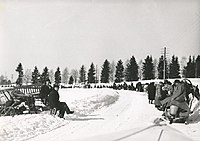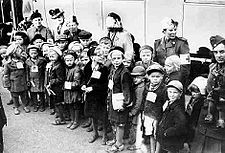Many countries like Finland have faced wars and their serious consequences.
There was no lack of solidarity when Finland housed half a million Karelian evacuees 1944.
420000 people had to move from Karelia 1941-1944 and 47000 people moved from Karelia before Winter war 1939-1940.
Finland sent over 80000 children to safety during the wars: the first children left for Sweden 1939.
72000 Sweden, 4200 Denmark, 100 to Norway.
15500 children never came back to Finland
The Karelian question arose when Finland was forced to cede territories to the Soviet Union after the Winter War in the Moscow peace treaty in 1940. Most Finnish citizens were evacuated from the ceded areas. Most of them returned during the Continuation War and eventually were evacuated again in 1944. The Soviet Union insisted the ceded areas be completely evacuated in 10 days. The evacuees were partly compensated for their losses; farmers, for example, received land in proportion to their earlier holdings. Usually, the compensation was about one third of the original farm. Compensation for movable property was much less. However, all evacuee families had a right to receive a small farm, and/or a plot for a detached house or a flat. The land used for these grants was confiscated by the state from municipalities and private owners. Financial compensation was funded by a general property tax of 10 to 30%, levied over a period of several years.[1][2] Because the vast majority of the evacuees who had to settle in the rest of Finland were from ceded Karelia, the question was labeled The Karelian Question. After the Winter War, Karelian municipalities and parishes established Karjalan Liitto (the Karelian Association) to defend the rights of Karelians in Finland.


